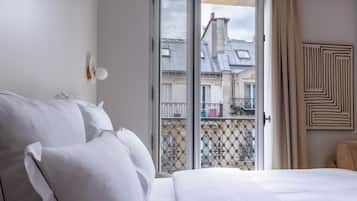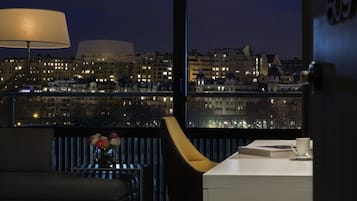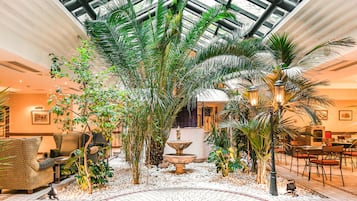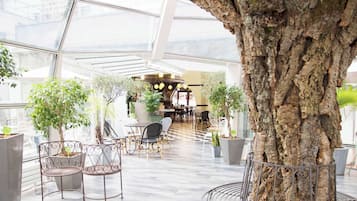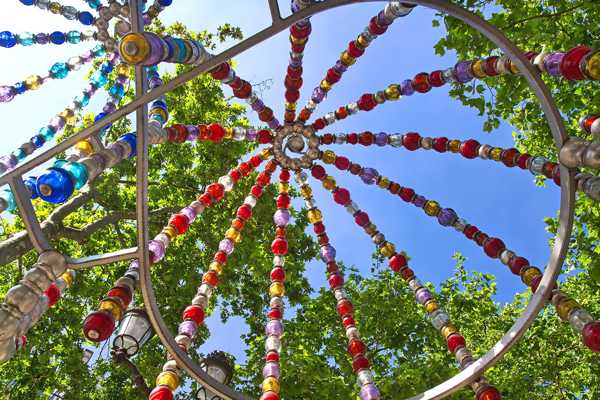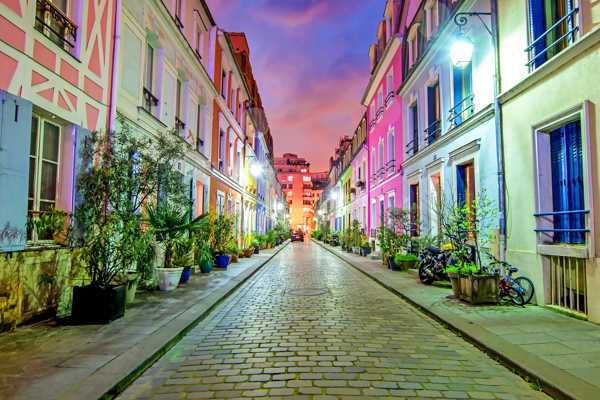Jardin des Tuileries (Tuileries Garden) is a 28-hectare formal garden in the heart of Paris, between Place de la Concorde and the Louvre. Originally built in 1564 as the private gardens of Tuileries Palace, it became a public park after the French Revolution and remains a popular spot for Parisians looking to celebrate major national events or just relax and enjoy a little peace and quiet.
The garden is especially noteworthy for its 18 bronze statues by French sculptor Aristide Maillol, as well as a selection of others depicting scenes and characters from classical antiquity. The big centrepieces of the park, however, are the large ponds with curiously small and modest fountains at their centre. The largest of the ponds is the Bassin Octogonal which, as the name suggests, is octagonal and about 60 metres across.
Jardin des Tuileries in Paris - one of the highlights of 10 Things to Do in Paris on a Small Budget and 12 Best Parks in Paris (Read all about Paris here)
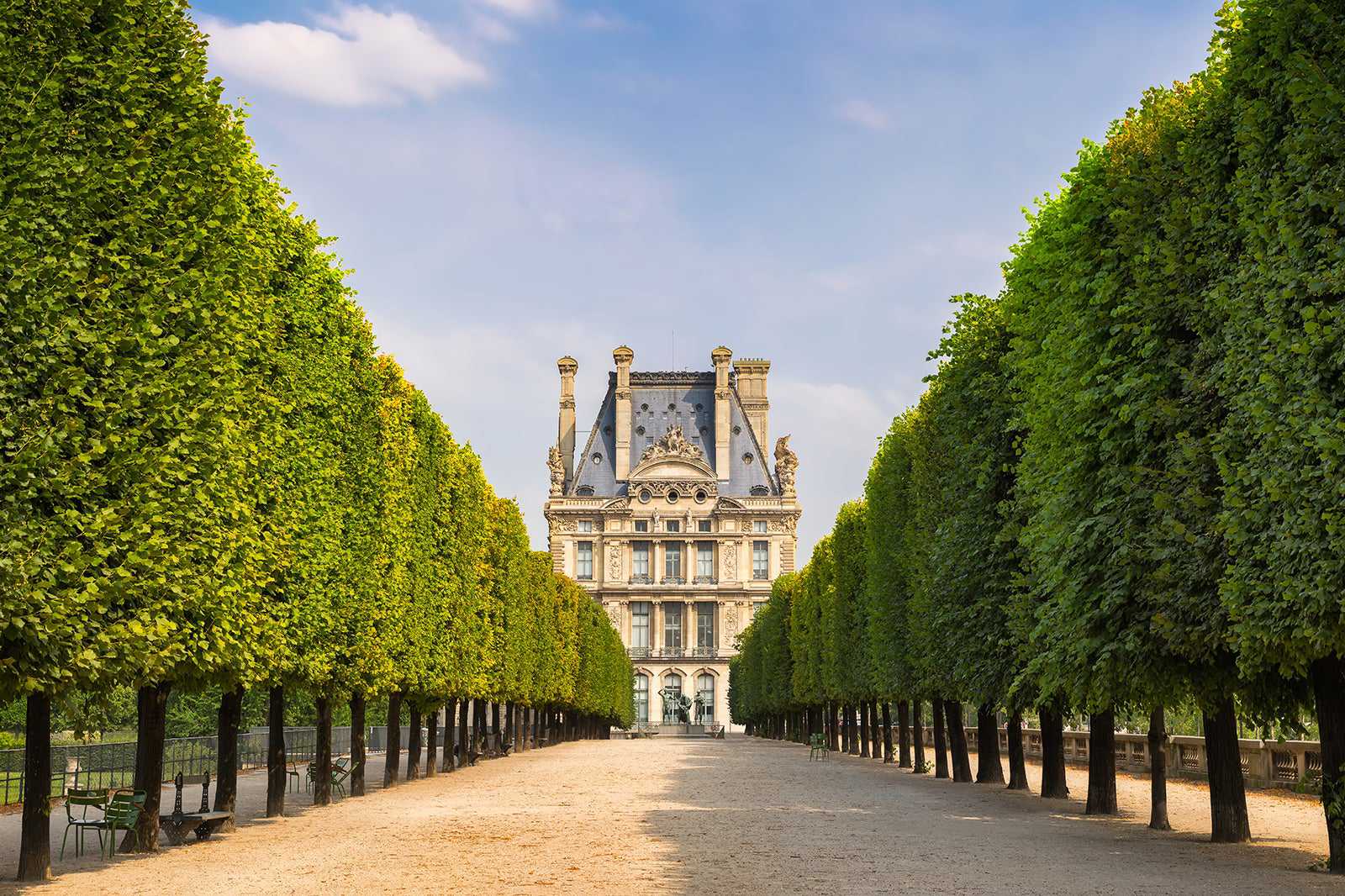
What are the highlights of Jardin des Tuileries?
Being a formal garden laid out in its current design in 1664, Jardin des Tuileries is very well compartmentalised, It has different attractions separated into neat squares ringed by rows of carefully shaped trees. A few of the squares contain small cafés, another provides a playground for younger kids, others are just patches of grass with maybe a statue or 2. Just exploring the park and seeing the vibrant colours of the trees and flowers is a pleasure, especially in spring and summer. The 35 species of trees are particularly vibrant in autumn, too.
At the Place de la Concorde end of the park are 2 long buildings, both of which were built in the mid-1800s. Both have been converted into art museums – Musée de l'Orangerie and Jeu de Paume. The former is noted for its works by Monet, including some of his famous Water Lilies series, while the latter was France's first national gallery of contemporary art, with a particular focus on photographic works.
If you’re looking for something a little more exciting and less cultural to do in Jardin des Tuileries, visit around July and August. The entire northern side of the park is turned into one long and narrow funfair, with rides and stalls the kids will love.
Down at the Louvre end of Jardin des Tuileries is the Jardin du Carrousel. Technically a separate park, it’s easily overshadowed by its larger, more impressive neighbour and, since the separator between them is just a 35-metre-wide footpath, it’s pretty easy to assume they’re part of the same park. A highlight here is the Arc de Triomphe du Carrousel. A half-sized version of the more famous Arc de Triomphe de l'Étoile, it was built around the same time as its big brother and for roughly the same reason – to celebrate Napoleon’s military victories and commemorate those who died winning them.
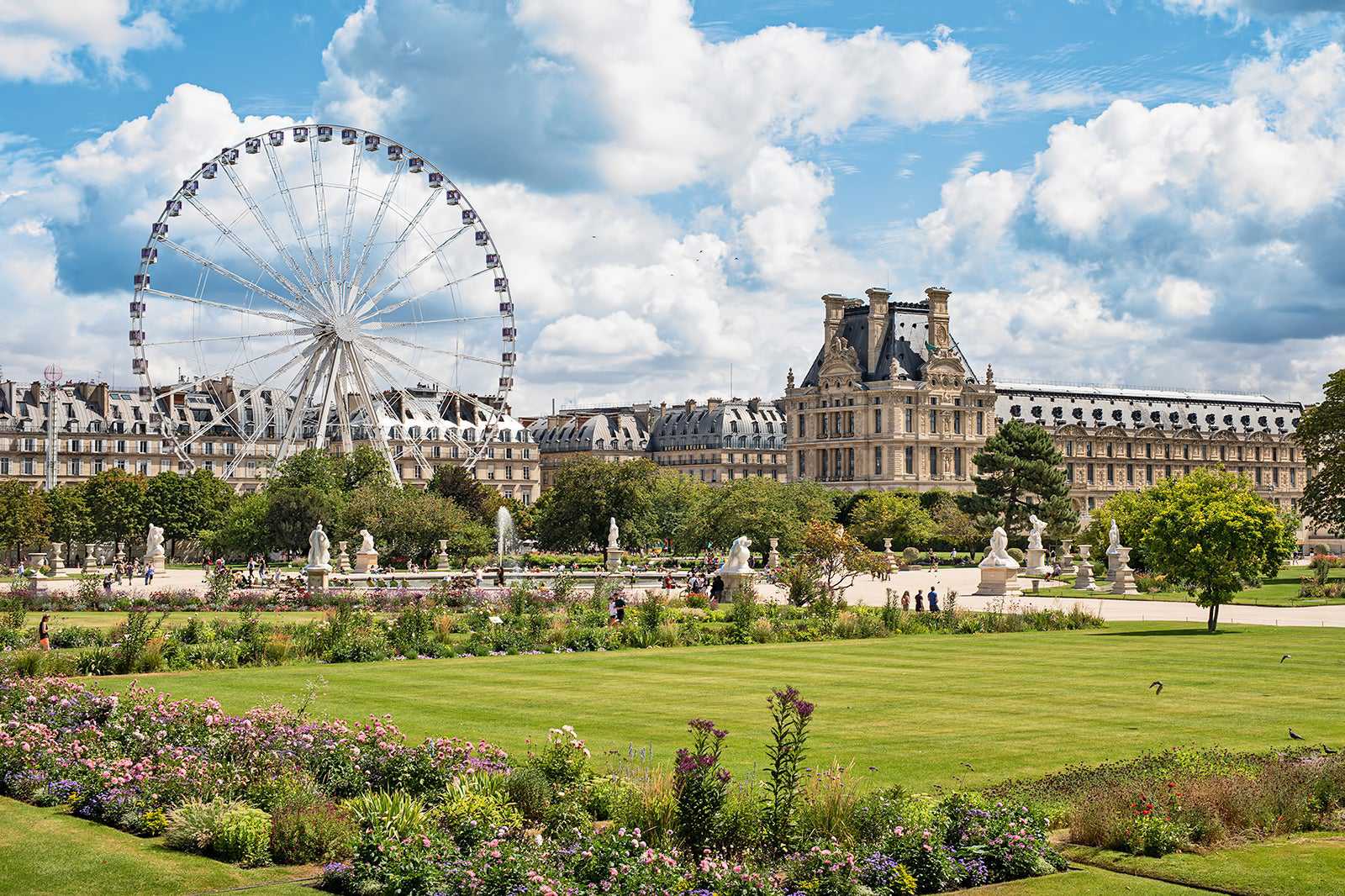
A brief history of Jardin des Tuileries
The Tuileries Garden takes its name from the tile factories that used to stand on the site where Queen Catherine de Medici built her palace in 1564. At that time, it was the largest and most beautiful garden in Paris, though it fell into disrepair after 1588 when King Henry III was forced to flee the city. Over subsequent years, it was renovated, replanted, redesigned and even repurposed. King Louis XIII, for example, kept a menagerie of animals for hunting in the park.
As previously mentioned, the gardens were redesigned in 1664 when King Louis XIV took the throne, getting none other than André Le Nôtre to create the garden as you see it today, a few years after he finished his work on the Gardens of Versailles. Later in 1667, the gardens were opened to the public and, following further neglect and repair and then a revolution, would become the National Garden of the French Republic in 1793. Since then, history has happened in and around it, from being on the route of Napoleon’s wedding procession to intense fighting during the liberation of Paris in WWII. Even so, its design has remained relatively unchanged.
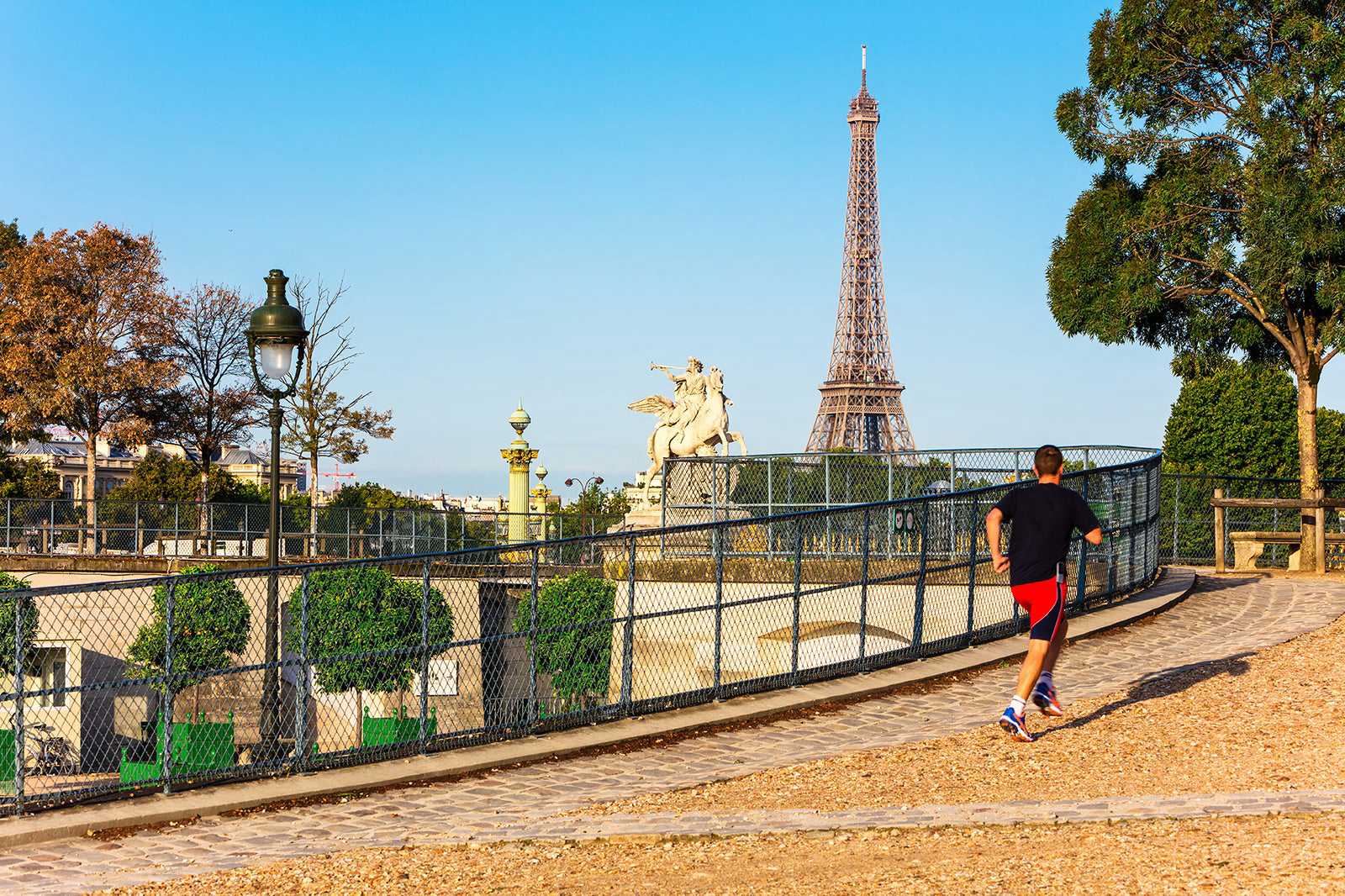
How to get to Jardin des Tuileries?
Being in Paris’ 1st arrondissement and therefore right in the centre of the city, Jardin des Tuileries is naturally very easy to get to. You can use the Paris Metro and get off at either Concorde or Tuileries, both of which are just a few steps from a park entrance.
Alternatively, buses 21, 27, 42, 68, 69, 72, 73, 84, 94 and 95 all stop nearby and the Musée d'Orsay RER train station is just over the Seine, putting it no more than 300 metres away. It’s strongly recommended that you do use public transport to get to this part of Paris as finding places to park can be difficult.
You could also get to the park on foot while visiting other nearby attractions – there are plenty of them. The Louvre is obviously just next door, but there’s also the Champs-Élysées on the other side of the Place de la Concorde, with the Arc de Triomphe at its far end. The Grand Palais, Les Invalides and Notre-Dame Cathedral are all within easy reach, too.
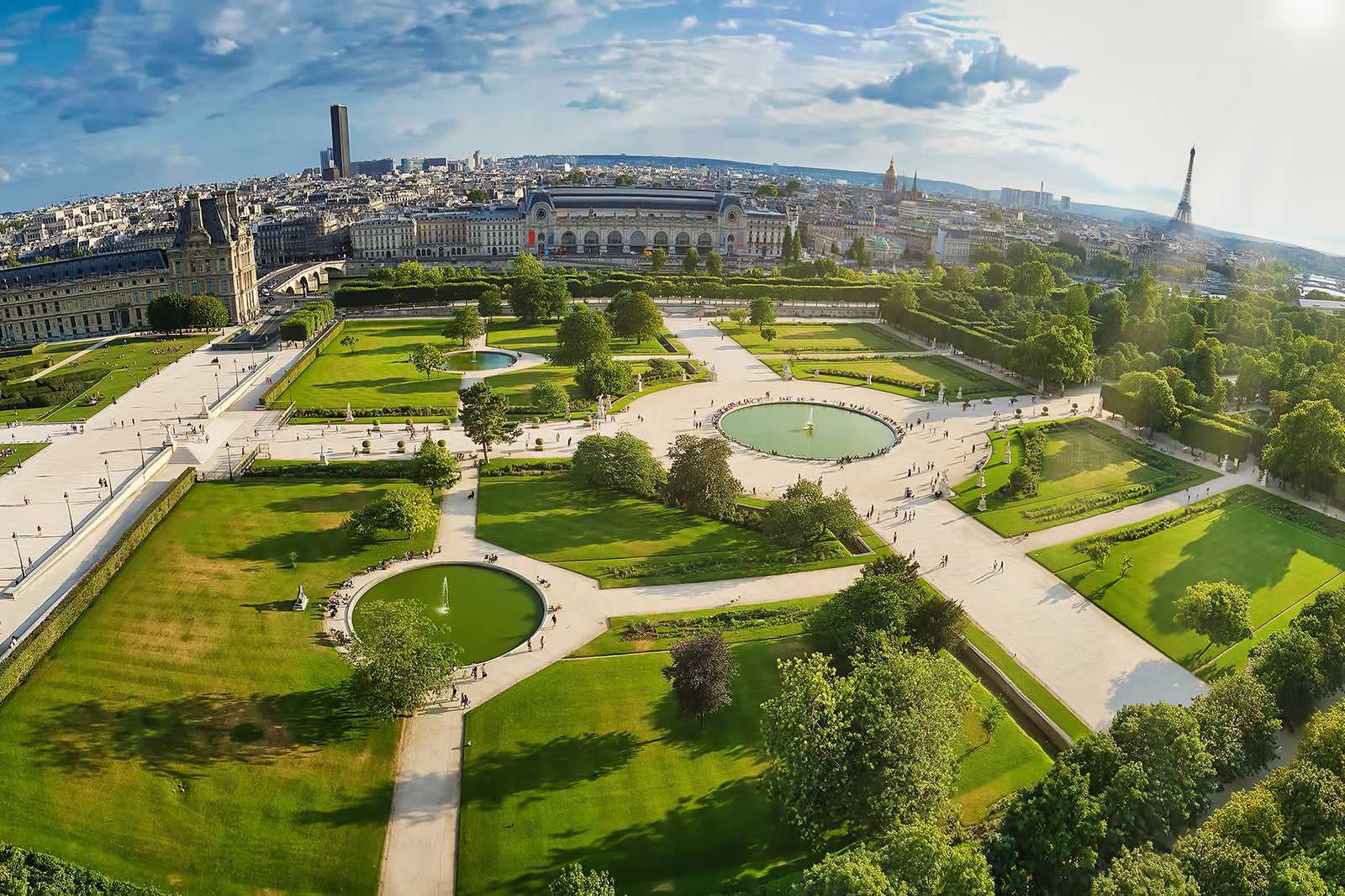
Jardin des Tuileries in Paris
Konum: 113 Rue de Rivoli, 75001 Paris, France
Açık olduğu saatler: April–May and September: daily from 7 am to 9 pm. June–August: daily from 7 am to 11 pm. October–March: daily from 7.30 am to 7.30 pm



